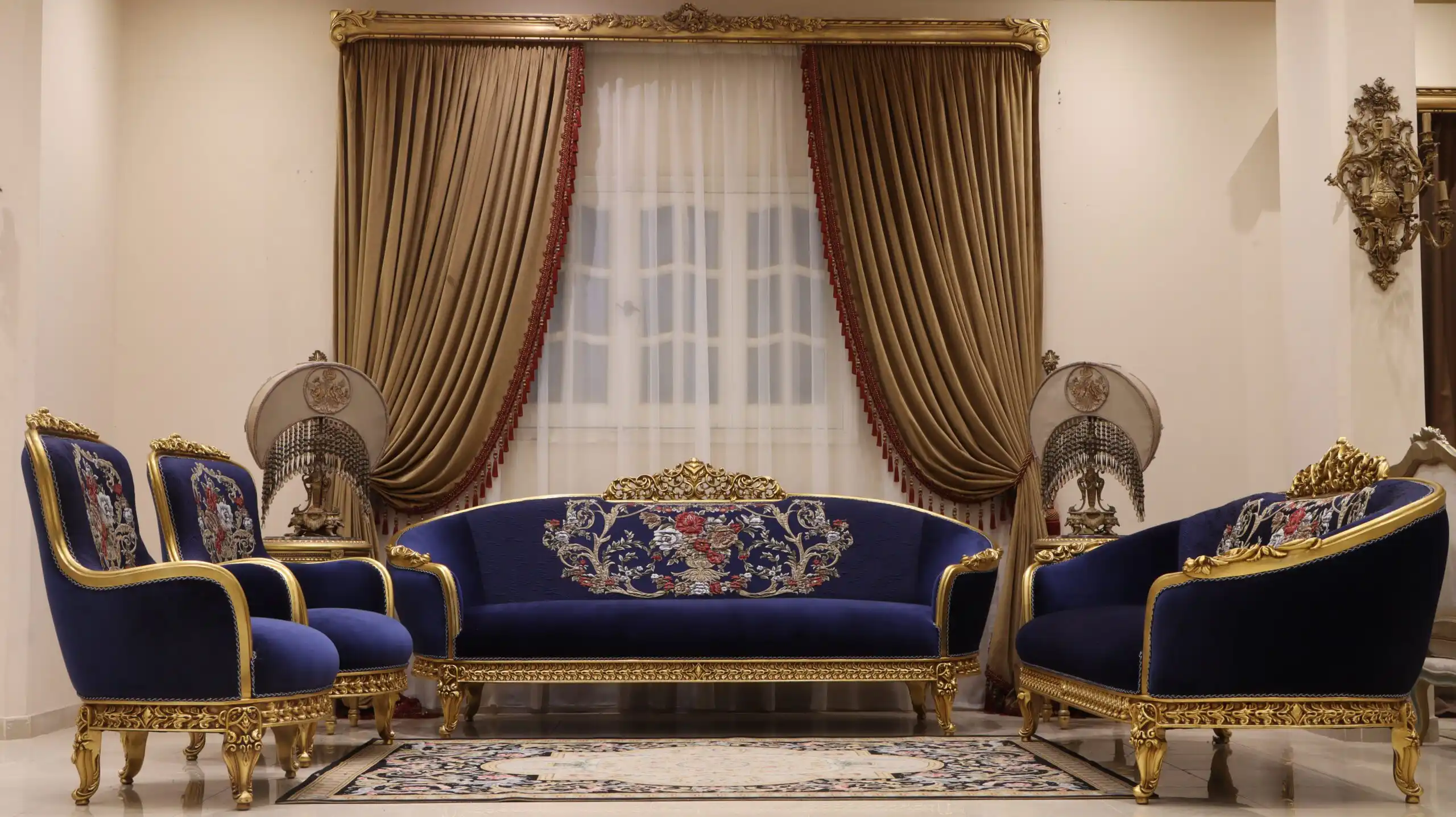How to Choose Handmade High-Quality Furniture: Expert Guide for Buyers

Handmade furniture embodies artistry, offering an opportunity to personalize your home with pieces that stand apart from mass-produced options. Choosing the right high-quality handmade furniture is crucial, as these pieces often serve as focal points and lasting investments.
Why Choose Handmade Furniture?
Unique Design and Craftsmanship
Each piece of handmade furniture is unique, crafted with personal attention by artisans. Unlike factory-produced items, handmade high quality furniture reflects a high level of skill, individuality, and detail, creating a one-of-a-kind aesthetic for any space.
Superior Durability and Quality
Handmade furniture is generally more durable than factory-made options because artisans select materials and techniques suited to long-lasting functionality. Craftsmen often use solid wood or premium metals, ensuring the furniture withstands time and wear without compromise.
Factors to Consider When Choosing Handmade High-Quality Furniture

Type of Wood
Choosing the right wood is essential in determining the quality and style of handmade furniture. Here are some popular choices:
| Wood Type | Characteristics |
|---|---|
| Oak | Dense, durable, and has a beautiful grain pattern. |
| Walnut | Known for its rich color and smooth grain. |
| Maple | Hard and resistant to scratches, perfect for tables. |
| Cherry | Ages well and darkens beautifully over time. |
Oak and maple are excellent options for high-use items like dining tables, while walnut and cherry bring elegance to less functional, decorative pieces.
Material Selection: Beyond Wood
While wood is a primary material in many high-quality handmade pieces, other materials contribute to the diversity and quality of handmade furniture. Consider these materials when looking for unique or functional additions:
Metal
Metal, especially wrought iron or brass, is often used for structural elements or decorative accents. High-quality metals resist corrosion and maintain their appearance with minimal upkeep.
Upholstery
For upholstered pieces, natural fibers like wool, cotton, or linen offer durability and comfort, while leather provides resilience and a refined texture. Handmade high-quality furniture with upholstery often uses sustainable fabrics that resist pilling, stains, and fading.
Stone
Incorporating stone elements, such as marble or granite, adds natural elegance and is often seen in handmade tables or sideboards. Stone surfaces are known for durability but should be sealed for protection.
Choosing Finishes: Protecting and Enhancing the Material
The finish on handmade furniture plays a critical role in both its look and longevity. A carefully applied finish protects the material and accentuates its natural qualities. Here are some finish types commonly used in handmade high-quality furniture:
| Finish Type | Description |
|---|---|
| Oil Finishes | Enhances natural grain, easy to touch up, requires regular care. |
| Varnish | Creates a protective layer, good for high-use furniture. |
| Wax Finishes | Provides a soft sheen, typically applied over oil finishes. |
| Lacquer | Creates a hard, glossy finish, durable, ideal for wood. |
Oil finishes provide a natural look but may require regular re-application, especially on high-use surfaces. Varnish and lacquer finishes are popular choices for their durability and are commonly seen on tables or dressers that undergo frequent use.
Ethical and Environmental Considerations
Choosing handmade high-quality furniture offers an opportunity to make more sustainable choices, especially if you prioritize eco-friendly and ethical practices.
Reclaimed Wood
Reclaimed wood is an eco-friendly material sourced from older structures or furniture, repurposed into new pieces. It brings character and history while reducing the demand for freshly cut trees.
Supporting Local Artisans
Buying handmade furniture often means supporting local artisans, which helps sustain traditional craftsmanship while reducing transportation-related emissions. When selecting pieces, inquire about the sourcing and crafting process to ensure that the materials and labor practices align with your values.
Functional Design: Ensuring the Furniture Meets Your Needs
When selecting handmade furniture, functionality is just as important as appearance. High-quality pieces should align with your practical needs, especially if you’re looking for items like storage or seating solutions.
Storage Solutions
Handmade storage furniture, such as cabinets or bookshelves, should have sturdy construction to bear weight over time. Look for details like solid back panels and properly fitted doors or drawers, which reflect meticulous craftsmanship.
Multi-Purpose Designs
Handmade furniture often includes innovative, multi-functional designs. For example, an artisan-crafted coffee table might have hidden storage or a seating bench might feature built-in shelving. Handmade high-quality furniture with multi-purpose functions is particularly valuable in smaller living spaces.
Maintenance and Care Tips for Handmade High-Quality Furniture
Maintaining handmade furniture is essential to ensure its longevity and appearance. Proper care depends on the material and finish used, but here are general tips:
Wood Care
Dust regularly with a soft, dry cloth. Avoid harsh chemicals, as they can strip finishes or harm wood over time. Periodic polishing with a compatible wood polish or oil can keep the wood in good condition.
Upholstery Cleaning
For upholstered pieces, vacuum regularly and spot-clean as needed. Natural fabrics may require gentle cleaners, and leather can benefit from conditioning treatments to maintain its texture.
Metal and Stone Maintenance
Metals typically require only occasional polishing to remove tarnish. Stone surfaces may need resealing every couple of years to protect against stains, especially in high-traffic areas.
Understanding Pricing and Budgeting
Handmade high-quality furniture varies significantly in price, based on factors like materials, craftsmanship, and customizations. Generally, handmade pieces are a larger upfront investment, but they offer long-term value due to their durability and unique design.
Balancing Cost with Quality
While higher prices often indicate superior craftsmanship, it’s still important to research and compare options. Ask artisans about the sourcing of materials, the construction process, and potential maintenance needs to ensure that the piece justifies its price.
Budgeting Tips
If you’re on a budget but still want quality handmade furniture, consider focusing on a few statement pieces rather than outfitting an entire room. Prioritizing items like a sofa, dining table, or bed frame can give you the most return on investment.
Handmade Furniture in Different Styles
Handmade furniture can fit any interior style, from minimalist to traditional, thanks to the diverse design approaches artisans take. Here are some popular styles where handmade pieces stand out:
Rustic
Rustic furniture emphasizes natural finishes, exposed wood grain, and reclaimed materials. This style works well with pieces like large dining tables or bed frames that feature distressed or unfinished surfaces.
Mid-Century Modern
Inspired by the mid-20th century, this style focuses on simplicity, clean lines, and organic shapes. Handmade mid-century pieces often use rich wood tones, making them ideal for sofas, chairs, or credenzas.
Industrial
Industrial handmade furniture combines wood and metal for a rugged, durable look. It’s commonly used in lofts and urban settings, with items like metal-framed bookcases, wooden dining tables with iron legs, or bar stools with leather seats.
Joinery Techniques
The joinery technique significantly impacts the stability and longevity of furniture. Some common and reliable methods include:
- Mortise and Tenon: Provides a strong joint by interlocking pieces.
- Dovetail Joints: Frequently used in drawers for its resistance to pulling apart.
- Finger Jointing: Offers both strength and aesthetic appeal, often used in cabinetry.
Handmade pieces should demonstrate meticulous joinery, as this reflects the quality of craftsmanship and ensures the furniture will remain stable over time.
Sustainability and Eco-Friendly Choices
Handmade furniture is often more sustainable, particularly when crafted with responsibly sourced or reclaimed materials. Many artisans select eco-friendly finishes and avoid harmful chemicals, which is better for your health and the environment. Supporting local artisans also reduces the carbon footprint associated with long-distance shipping and promotes eco-friendly practices.
Table: Eco-Friendly Certifications to Look for in Wood Furniture
| Certification | Description |
|---|---|
| FSC | Ensures wood is harvested sustainably and ethically. |
| GreenGuard | Certifies low chemical emissions for healthier indoor air. |
| Rainforest Alliance | Promotes biodiversity and sustainable forestry. |
Customization and Personalization Options
One of the main reasons people invest in handmade furniture is the ability to personalize pieces to their style and space. Artisans often work closely with clients, offering options in wood, finish, size, and design details. This level of customization ensures the furniture aligns with your aesthetic vision while accommodating specific spatial requirements.
Popular Customizable Elements
- Wood Type and Finish: From natural finishes that highlight the wood grain to painted options that add color.
- Size Adjustments: Tailoring dimensions ensures a perfect fit for your space.
- Detailing: Unique details like carvings or inlays provide a personalized touch.
Custom pieces not only enhance the visual appeal of a room but also make your home truly yours by reflecting personal taste.
Investing in Handmade Furniture: Long-Term Value
When choosing handmade high quality furniture, consider the long-term value it offers. Artisanal pieces are crafted to last, potentially even becoming heirlooms. Unlike mass-produced furniture, handmade pieces tend to retain or even increase in value over time due to their craftsmanship and uniqueness.
Pro Tip: Look for artisans or companies that offer maintenance and repair services. High-quality pieces might require occasional touch-ups, and having access to the original craftsman ensures consistency in repair quality.
Final Tips on Choosing Handmade High-Quality Furniture
- Research Artisans: Seek out artisans with a portfolio of high-quality work. Checking reviews and visiting workshops (if possible) helps assess their craftsmanship.
- Ask About Materials: Reputable artisans are transparent about their material sources, so ask for details about wood, hardware, and finishes.
- Inspect Joinery and Finish: Look closely at the joinery and finishing. Smooth finishes, precise cuts, and solid joinery are signs of quality.
- Consider Your Lifestyle Needs: Choose materials and styles that fit your lifestyle. Families with children, for instance, may need more durable finishes and woods that resist dents.
FAQs
What Makes Handmade Furniture More Durable?
Handmade furniture often uses high-quality, solid wood and superior joinery techniques. Artisans apply finishes by hand, which offers a level of detail and durability unmatched by machine-applied coatings.
How Do I Know If the Wood Is Sustainable?
Look for certifications like FSC (Forest Stewardship Council) or Rainforest Alliance. These indicate responsible sourcing and environmentally friendly practices.
What Are the Best Wood Choices for Handmade Furniture?
Popular options include oak, walnut, and maple. Oak offers durability, walnut provides a rich color, and maple is scratch-resistant, making each suitable for specific types of furniture.
Why Is Handmade Furniture More Expensive?
Handmade furniture is crafted with care and often involves high-quality materials, customized designs, and time-intensive techniques. The value lies in the craftsmanship and longevity, which often justifies the cost over cheaper, mass-produced alternatives.